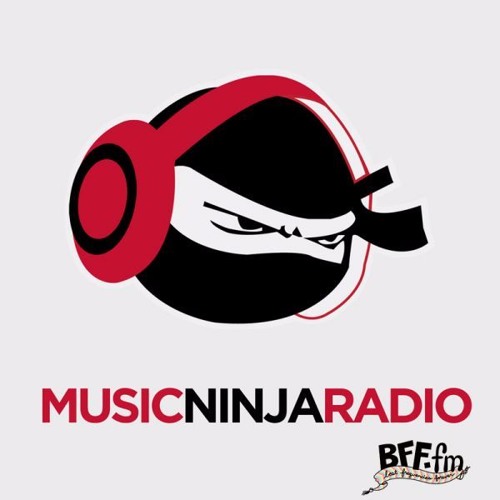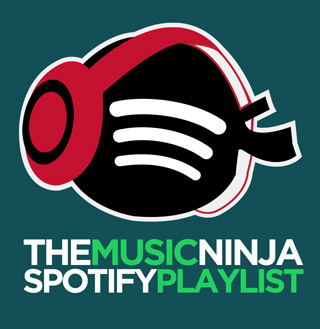
Changes EP
Ableton Push spokesperson and Team Supreme co-founder JNTHN STEIN recently released his latest EP Changes, also remixed by fellow Team Supreme artists Mr. Carmack, Djemba Djemba, and Penthouse Penthouse, featuring a melding symphony of electric guitar, bass riffs, innovative production, synths, delicate jazz piano and vocals. His abilities created a layering masterpiece that exposes the intimate workings behind a mind capable of exposing sounds and textures that we didn’t even know existed. We got the chance to talk to Stein more about the EP and the beginnings of his musical career, check out his detailed insight below and be sure to stream or download here.
TMN: You attended the Manhattan School of Music which is awesome, so many great producers have come out of that school, before this though when did you pick up your first instrument and which one was it?
JNTHN STEIN: My first instrument was actually clarinet, and I started playing it when I was 12 so as to meet my middle school band requirement at the time. However, the first instrument that began my obsessive and passionate relationship with music was the electric bass, which I started at age 14.
TMN: Were you self taught or given lessons when you first started?
JS: I taught myself as much as I could for about a year before taking instruction. I enjoyed learning my favorite rock basslines at the time by listening to records and just being patient. I’m incredibly grateful for all my time spent with great teachers however, they kept me focused on the most universal and versatile applications of music through the respective instrument, and on the path of taking care of my body most importantly. Musical instruments can be very physical, and the most valuable thing I’ve taken from them was playing with as little labor and ergonomic stress as possible, so that I can keep playing them for the rest of my life with comfort and happiness.
TMN: How do you think MSM shaped you into the producer you are today?
JS: My studies and experiences at MSM gave me a broad vantage point on the history and trajectory of music over the span of 1000 years, and helped me understand that, not only is change and evolution incredibly important to the development of art and the society it reflects, but simply inevitable. Everything that has been, from when man first struck a rock with a stick and called it a drum to the hyper-eclectic world of digital/electronic recorded music of today, has been one linear trajectory, and it will keep changing drastically for all of our time. No matter how much tradition and pretense you study and observe, the end result always points to a path of perpetual and sometimes chaotically arbitrary forward progress and constant cultural imaginative innovation, based on understanding the established rules, and then breaking all of them.
TMN: At what point in your studies did you think to start branching out from classical music?
JS: I had always been pretty all over the place aesthetically since I started making music, from growing up in the hiphop/funk-rich city of Oakland to my parents taking me to see the living jazz greats play live whenever possible. However, while at MSM I was taking the seemingly tried-and-true path of the orchestral musician, despite me knowing that it would be at the expense of my creativity and spiritual freedom deep in my heart. By my third year in school, I had reached a personal unprecedented cynicism on the musician’s life and morbidity of life altogether. I felt that, despite all my efforts and passion, my voice was so small and would never be heard from this small bubble inside the big picture of music, let alone would I ever get to say what I truly wished to express. So, I started to casually make beats on Garage Band for the sake of escapism, and then Ableton upon getting my first cracked copy. It didn’t take long after for me to see the limitless creative possibilities with this medium, and connect the dots to its already established and blooming accessibility. That summer I realized that this would change everything, for myself and my music making, and for music as a whole.
TMN: You play each instrument yourself in your EP – Which ones can listeners find if they listen closely? Any hidden ones?
TMN: What was your introduction to the electronic side of music?
JS: Sophomore year at MSM, my ears started to wander to the nuances of programmed drum loops, particularly J Dilla. There was a soothing constance and cyclic rigidity, yet the feel was still so dangly and reclined while simultaneously being snappy and forward-pushing, it was an awesome combination to me that created a bounce that swung your body back and forth like a gelatinous stick figure. From here I grew to appreciate the production of popular music such as Timbaland and Pharrell through their simple yet sultry, smooth and seductive use of harmony, and soon after the brilliant timbral range of synthesizers through artists like Kaskade and Skrillex, and the raw boundless textural atmospheric possibilities through Flying Lotus and Toro Y Moi.
TMN: You worked closely with Ableton Push as a spokesperson, which resulted in your Berlin EP – how did that collaboration come about and what was the best part about it?
JS: I was first introduced to Push the summer of 2013, and immediately connected with it because of its guitar/bass-inspired keyboard layout. I took the risk of using it in a show with Team Supreme in LA, and there happened to be an Ableton artist rep in the audience whom I’ve become great friends with and was nice enough to offer me a Push in exchange for feedback. The next year and a half was spent getting to know Push as closely as possible through my music production. Finally after this period of study, I had the pleasure of meeting the creator of Push itself, and had the chance to show him how I used it. Our afternoon together ended with him inviting me to film a video of me making music with Push for Ableton. The video was filmed in Berlin some time later, for which we did three takes of me making a song from scratch for two hours each. The third take became the video they published, but additionally I thought it would be fun to release all three of the songs created as an EP and simply name it after where it was made, a city that I loved for its raw outspoken stand on social and artistic freedom, good coffee and food.
TMN: Do you think producers that have classical training or are able to play an instrument have an advantage over producers who don’t? Why or why not?
JS: The most wild imaginative sounds I’ve heard have come from some of my friends who’ve never touched a physical instrument before. The new instrument is the laptop and the DAW, and it already has its own virtuosos. But, while you can be an incredible beatmaker with this instrument and knowledge alone, to truly tap into the whole cultural amalgam that has been built from day one and led to the musical idioms we have today and project the ones to come and use this to try and make the songs that might change the world for the better, I like to think it helps to have experienced how music was made before the computer. While timbre is very much at the front of recorded music today, it functions on top of the foundation of rhythm, melody, harmony, and the iconic nostalgia-inducing sounds of strings, horns, drums, guitars, keyboards and piano of older times, that will never ever fade and become irrelevant because of how acoustically unique and imprinting they are. Nothing excludes anything else, I’d like to see how far we can go with computers, instruments, and of course humans working together endlessly.
TMN: As a member of the Team Supreme collective, how does it feel to have such amazing artists that you know personally remixing your EP?
TMN: Where did your inspiration and ideas for your Changes EP come from? Are you someone that comes up with melodies in your head before you lay them down? Do they come from sounds you hear, or certain influences etc…?
JS: I consider myself an empty jar when the music process begins, the moment I form preconceptions I become anxious and feel restricted. I like to push record, turn Push on or put my bass in my lap, and just follow wherever my fingers take me in real time, and then edit it all into cohesiveness afterwards. I suppose the sounds of my muscle memory and subconscious come from everything I’ve ever heard, jumbled into a tasty music stew in my brain.
TMN: Lastly, what can we expect from you in the future, maybe an album or a tour?
JS: You can absolutely expect more EP’s as well as an album, a North-American tour starting in mid April, more music to come for a long long time, and most importantly, you can expect me to always go through ‘Changes’




















